It always feels like Christmas when new music lands on my desk, and doubly so this morning with the latest anthology from Shorter House, Sleep, Holy Babe.
Planning choral repertoire for the Christmas season, for me, begins in the summer, looking for repertoire for the University Carol Service in Canterbury Cathedral each December, and this year the Chamber Choir will be working from this collection of contemporary works, a rich anthology containing seasonal lullabies, carols, settings of the Magnificat, and Advent antiphons. The collection includes new setting of favourite seasonal texts, including Lullay my Liking and the Coventry Carol, and features both a cappella and accompanied pieces from a range of contemporary composers. There’s a great versatility to the set, which also includes pieces for upper-voice choir, which makes it particularly appealing – whilst you develop a clear programme for the choral year, it’s always useful to have scope for flexibility in case, as happened this year, the audition choir turns out to be upper-voices rather than SATB.
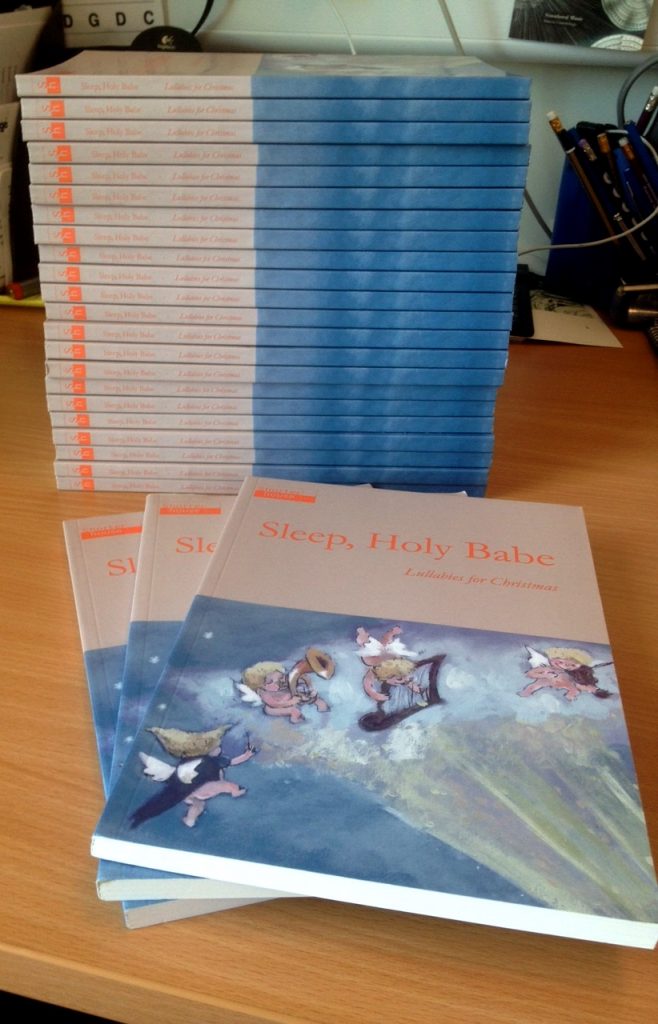 There’s also some really beautiful music contained in the collection, which I’m hoping will surprise anyone who tends to think that New Music means aggressive dissonance, irrational time-signatures, metric uncertainty and angular lines. These pieces are all singable – care has been taken by the composers to make the music easily performable – without compromising on an arresting musical language or sonorous colours.
There’s also some really beautiful music contained in the collection, which I’m hoping will surprise anyone who tends to think that New Music means aggressive dissonance, irrational time-signatures, metric uncertainty and angular lines. These pieces are all singable – care has been taken by the composers to make the music easily performable – without compromising on an arresting musical language or sonorous colours.
Sleep, Holy Babe will be thrust into the hands of the newly-auditioned Chamber Choir in the autumn, and I’m very much looking forward to exploring these new landscapes in time for December. We’ll let you know how we get on…



 One of the projects I’m currently devising for the University Cecilian Choir is a performance – well, perhaps ‘realisation’ is a more appropriate term – of David Lang’s
One of the projects I’m currently devising for the University Cecilian Choir is a performance – well, perhaps ‘realisation’ is a more appropriate term – of David Lang’s 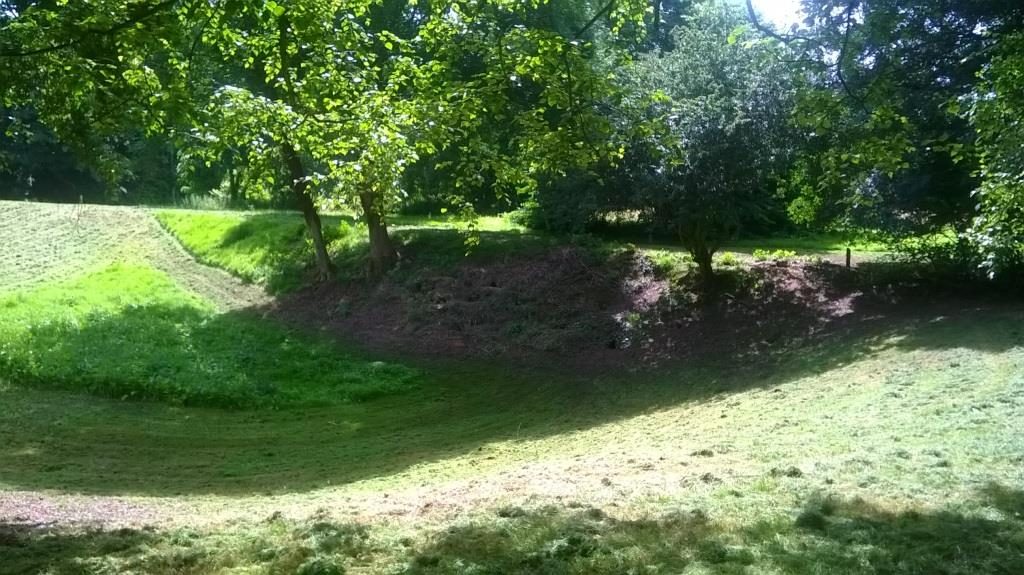
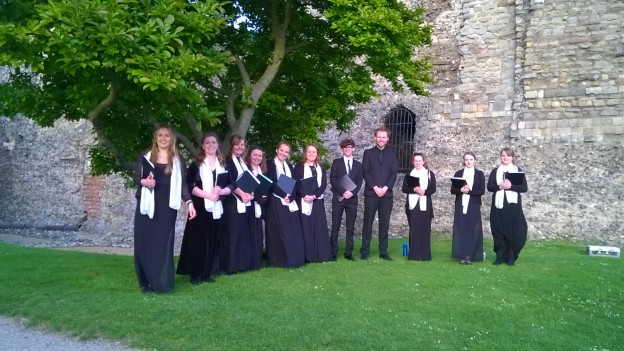
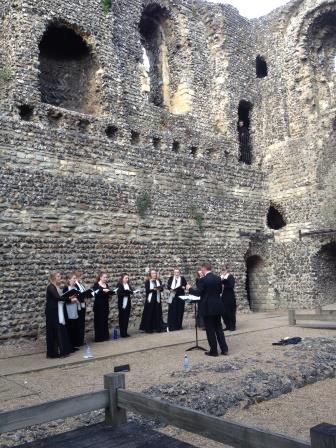 As the sun set, the ancient site rang to the sound of medieval plainchant as the performance opened with a Kyrie by Hildegard von Bingen, the long lines lifting and skirling around the keep and lifting into the blue skies.
As the sun set, the ancient site rang to the sound of medieval plainchant as the performance opened with a Kyrie by Hildegard von Bingen, the long lines lifting and skirling around the keep and lifting into the blue skies. As the programme unfolded, you could feel the audience draw closer to the music across the shingle area which separated the singers from the boarded walkway, around which the audience stood or sat. Assistant conductor Joe Prescott drew forth a tight-knit Ave Verum by Mozart and and sprightly O Swallow, Swallow by Holst, amongst other works.
As the programme unfolded, you could feel the audience draw closer to the music across the shingle area which separated the singers from the boarded walkway, around which the audience stood or sat. Assistant conductor Joe Prescott drew forth a tight-knit Ave Verum by Mozart and and sprightly O Swallow, Swallow by Holst, amongst other works.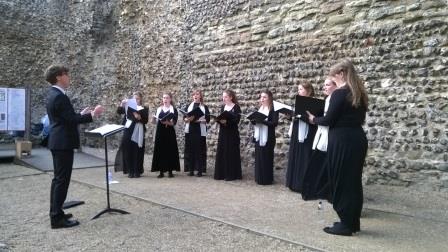
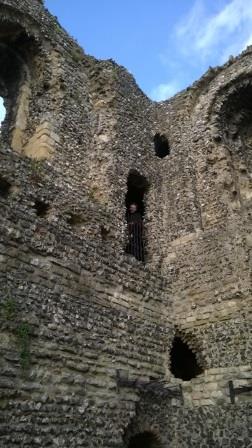 The performance came to a dramatic conclusion with a militant Norwegian setting of the Song of Roland, with drummer Cory Adams positioned above the audience in one of the castle towers, stridently beating a decorative accompaniment that recalled the military nature of the castle’s history in vivid, echoing sound.
The performance came to a dramatic conclusion with a militant Norwegian setting of the Song of Roland, with drummer Cory Adams positioned above the audience in one of the castle towers, stridently beating a decorative accompaniment that recalled the military nature of the castle’s history in vivid, echoing sound.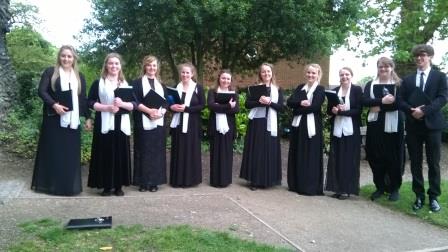
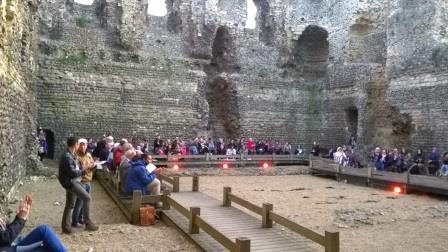
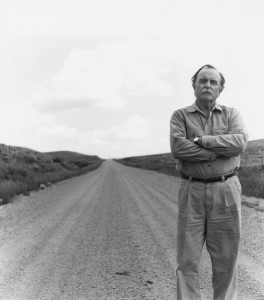
 The weekly programme celebrating choral singing will feature the Choir as part of its ‘Meet My Choir’ slot, in which it highlights choirs from around the country. Needless to say, the student and staff members of the Cecilian Choir are very excited at the prospect.
The weekly programme celebrating choral singing will feature the Choir as part of its ‘Meet My Choir’ slot, in which it highlights choirs from around the country. Needless to say, the student and staff members of the Cecilian Choir are very excited at the prospect.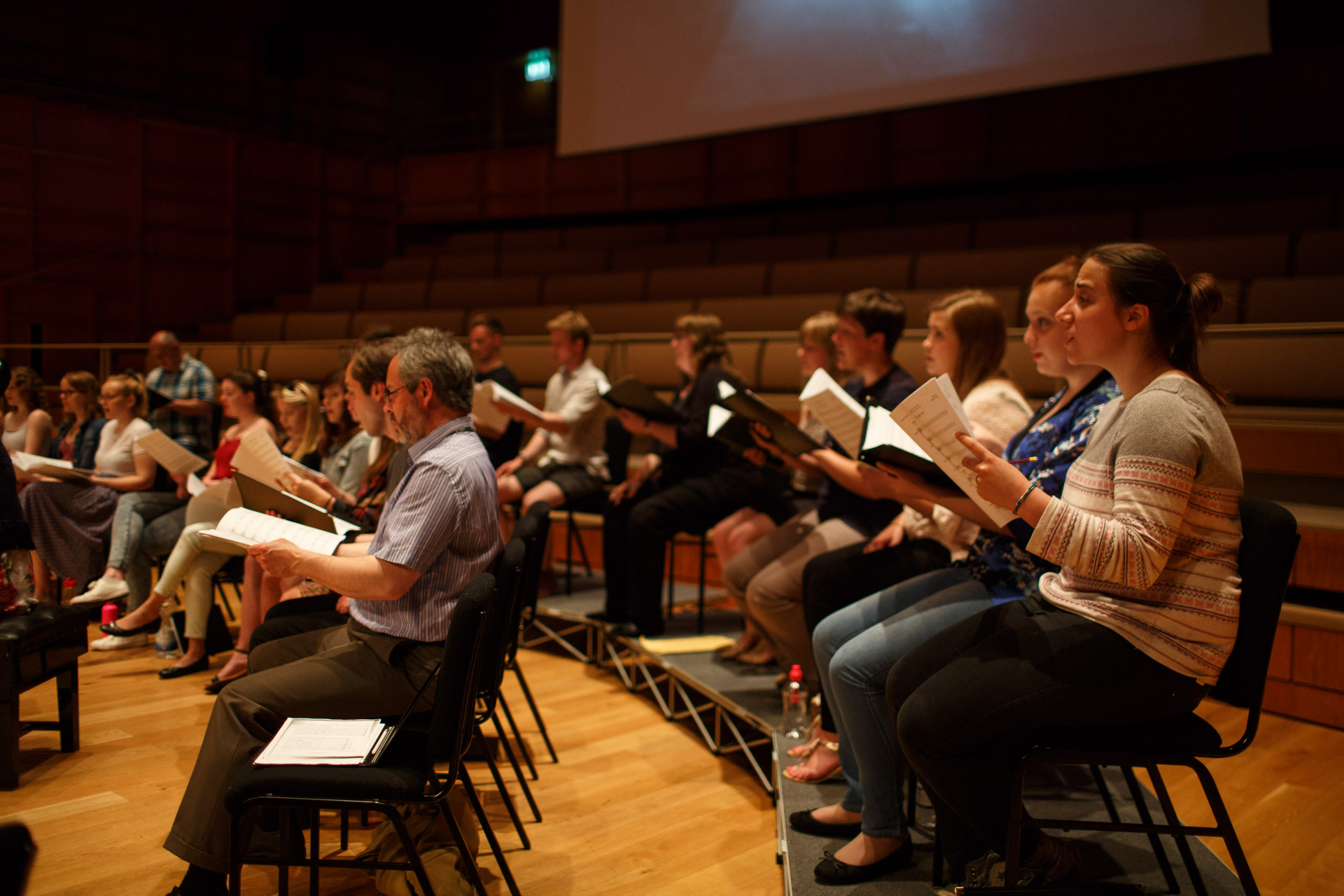

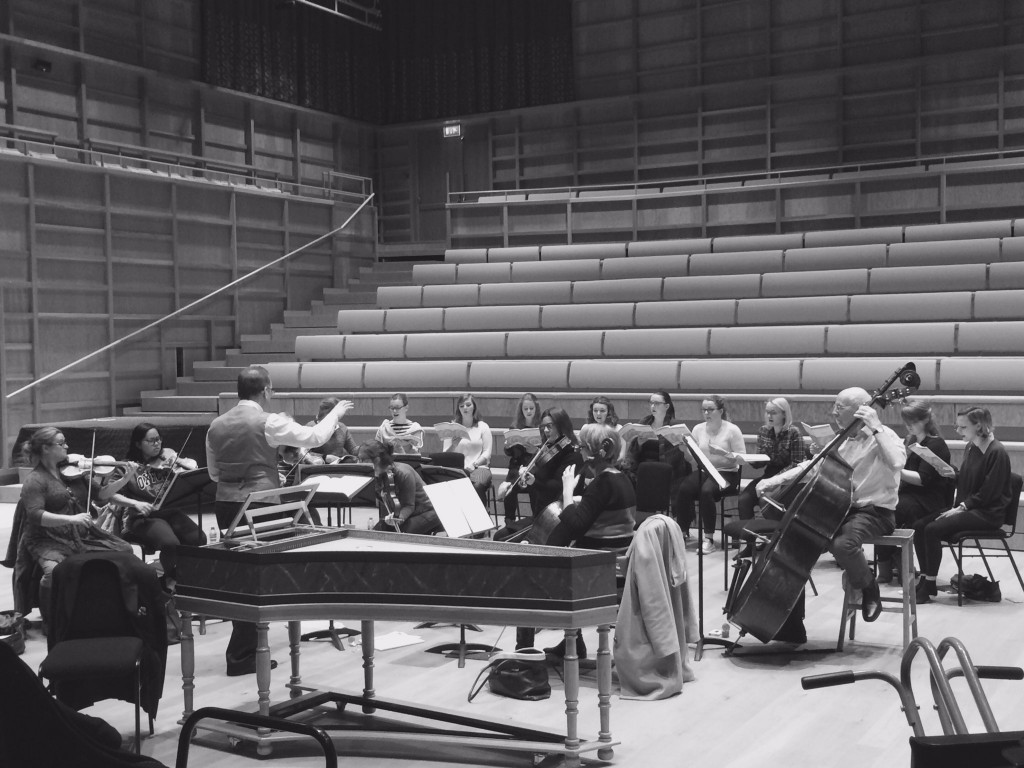 Last night was spent, therefore, making the piece sound as vital, as alive and challenging as possible. From the brilliant opening cry of the chorus, through the pastoral intimacy of the central Domine Deus to the fervent finale, we built a revitalised reading of Vivaldi’s masterpiece, which we will unleash in the Crypt this coming Friday. Combined with the exploratory first half – choral pieces across the centuries, from Hildegard von Bingen to Veljo Tormis – the concert promises to be something quite special.
Last night was spent, therefore, making the piece sound as vital, as alive and challenging as possible. From the brilliant opening cry of the chorus, through the pastoral intimacy of the central Domine Deus to the fervent finale, we built a revitalised reading of Vivaldi’s masterpiece, which we will unleash in the Crypt this coming Friday. Combined with the exploratory first half – choral pieces across the centuries, from Hildegard von Bingen to Veljo Tormis – the concert promises to be something quite special.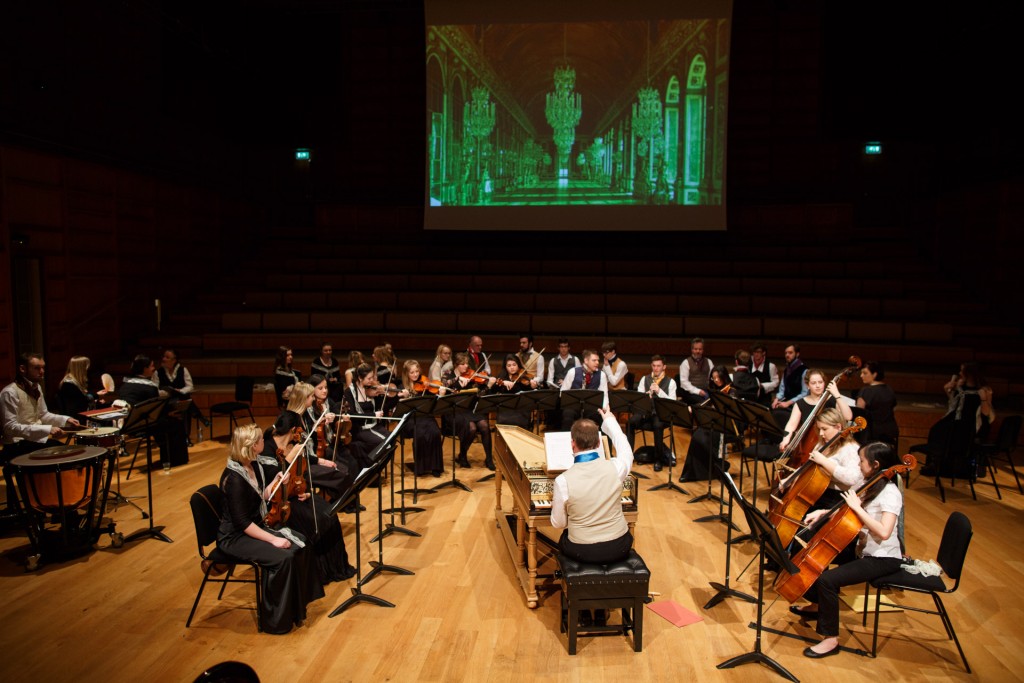
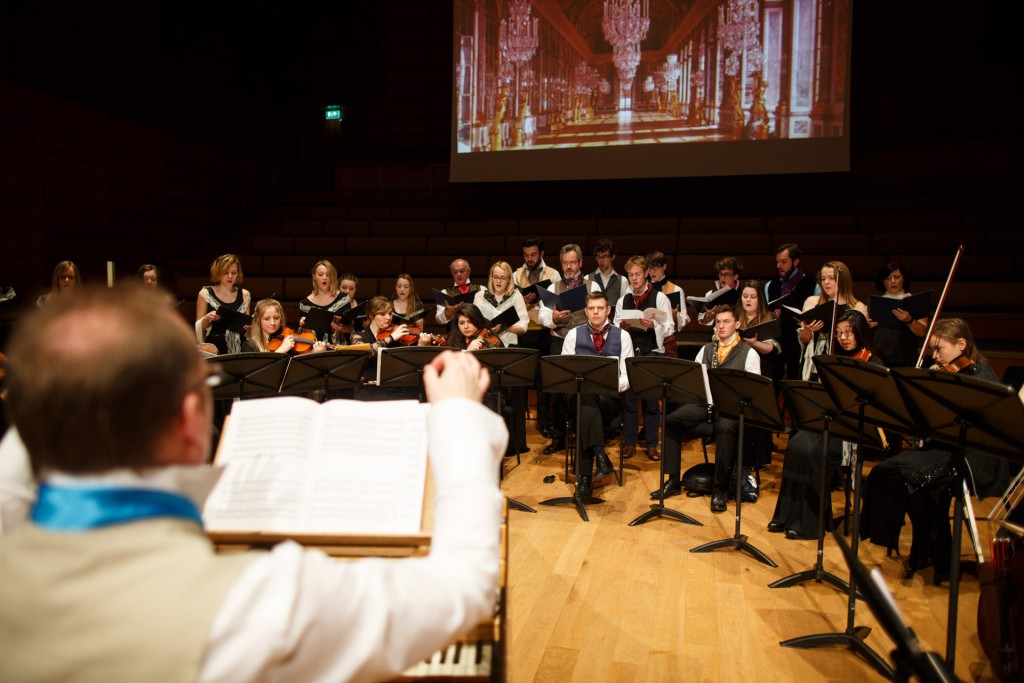
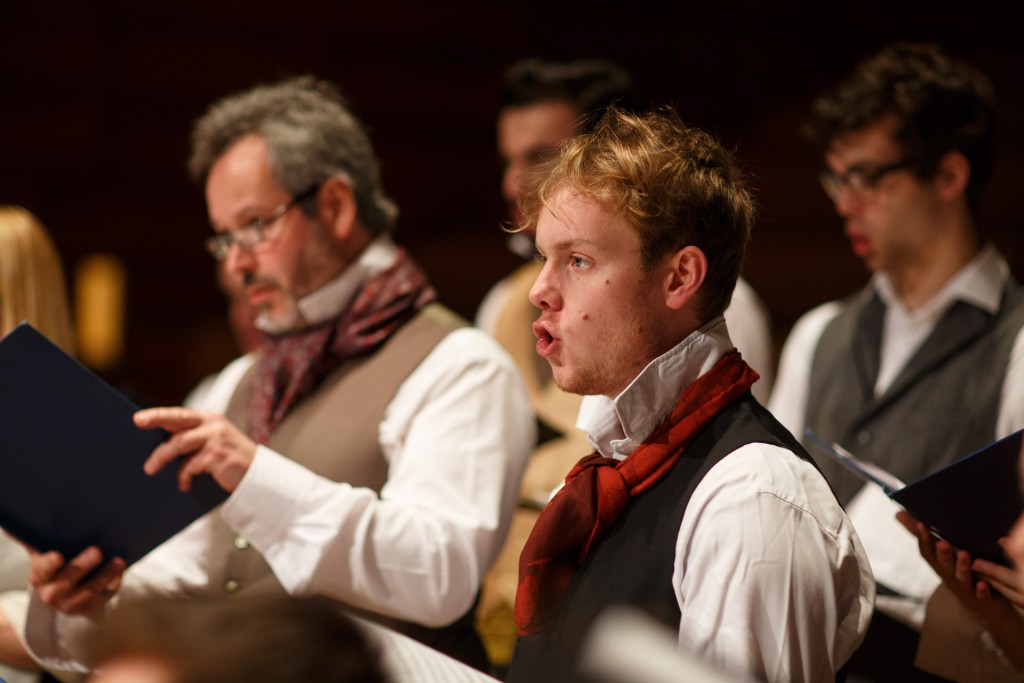

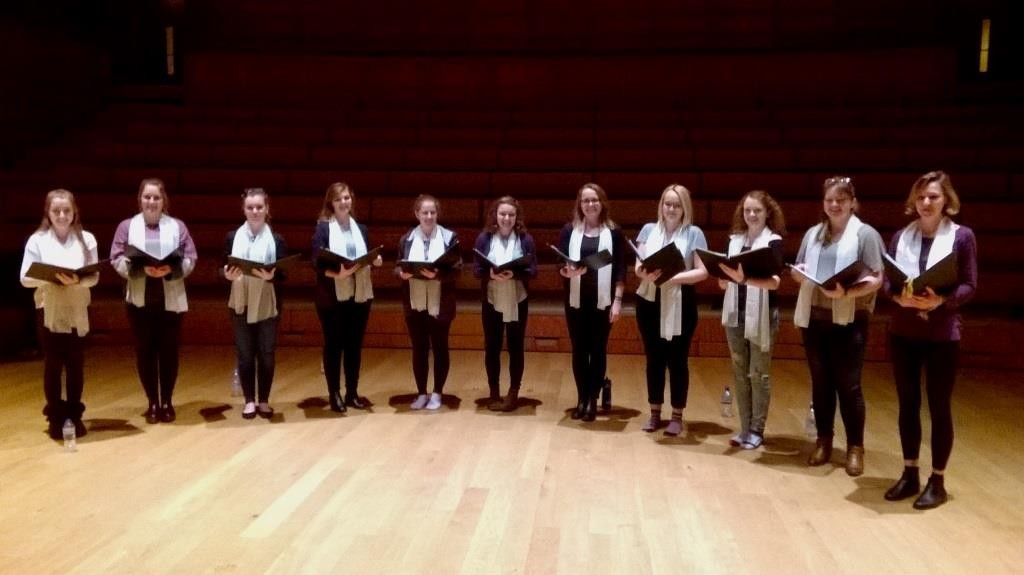 Having spent the first half of the rehearsal working on Vivaldi’s Gloria for the Crypt concert in two weeks, the tone of the rehearsal rose in the second half with our practice run-through. What it taught us was that the level of sustained concentration is very demanding, even in a mock situation. And working through the pieces in order allowed us, afterwards, to reflect on the pacing of the programme as a whole, and how we might improve it. Assistant conductor Joe moved the pace of Holst’s O Swallow, Swallow on slightly, and produced a much freer interpretation; the same also for Tartini’s setting of the Stabat Mater, which needs to avoid luxurious wallowing if the piece isn’t to feel too unwieldy. Of course, you always pace a performance according to the nature of the acoustic in which you are singing, and Studio 3 Gallery has a rich, resonant acoustic that could lure us into really dwelling on chords and the ends of phrases, so we will have to be alert to any tendancy to dawdle!
Having spent the first half of the rehearsal working on Vivaldi’s Gloria for the Crypt concert in two weeks, the tone of the rehearsal rose in the second half with our practice run-through. What it taught us was that the level of sustained concentration is very demanding, even in a mock situation. And working through the pieces in order allowed us, afterwards, to reflect on the pacing of the programme as a whole, and how we might improve it. Assistant conductor Joe moved the pace of Holst’s O Swallow, Swallow on slightly, and produced a much freer interpretation; the same also for Tartini’s setting of the Stabat Mater, which needs to avoid luxurious wallowing if the piece isn’t to feel too unwieldy. Of course, you always pace a performance according to the nature of the acoustic in which you are singing, and Studio 3 Gallery has a rich, resonant acoustic that could lure us into really dwelling on chords and the ends of phrases, so we will have to be alert to any tendancy to dawdle! So, the next time Minerva Voices meets, it’ll be in the gallery, warming up for the performance on Friday lunchtime (
So, the next time Minerva Voices meets, it’ll be in the gallery, warming up for the performance on Friday lunchtime ( This is such a difficult question to answer! I have sung so many pieces in a variety of styles, both in choirs and as a solo performer, that choosing one is no easy task… I think my favourite choral piece has got to be ‘And The Glory Of The Lord’ from Handel’s Messiah because it is so much fun to listen to as well as sing, although it’s no easy task!
This is such a difficult question to answer! I have sung so many pieces in a variety of styles, both in choirs and as a solo performer, that choosing one is no easy task… I think my favourite choral piece has got to be ‘And The Glory Of The Lord’ from Handel’s Messiah because it is so much fun to listen to as well as sing, although it’s no easy task!